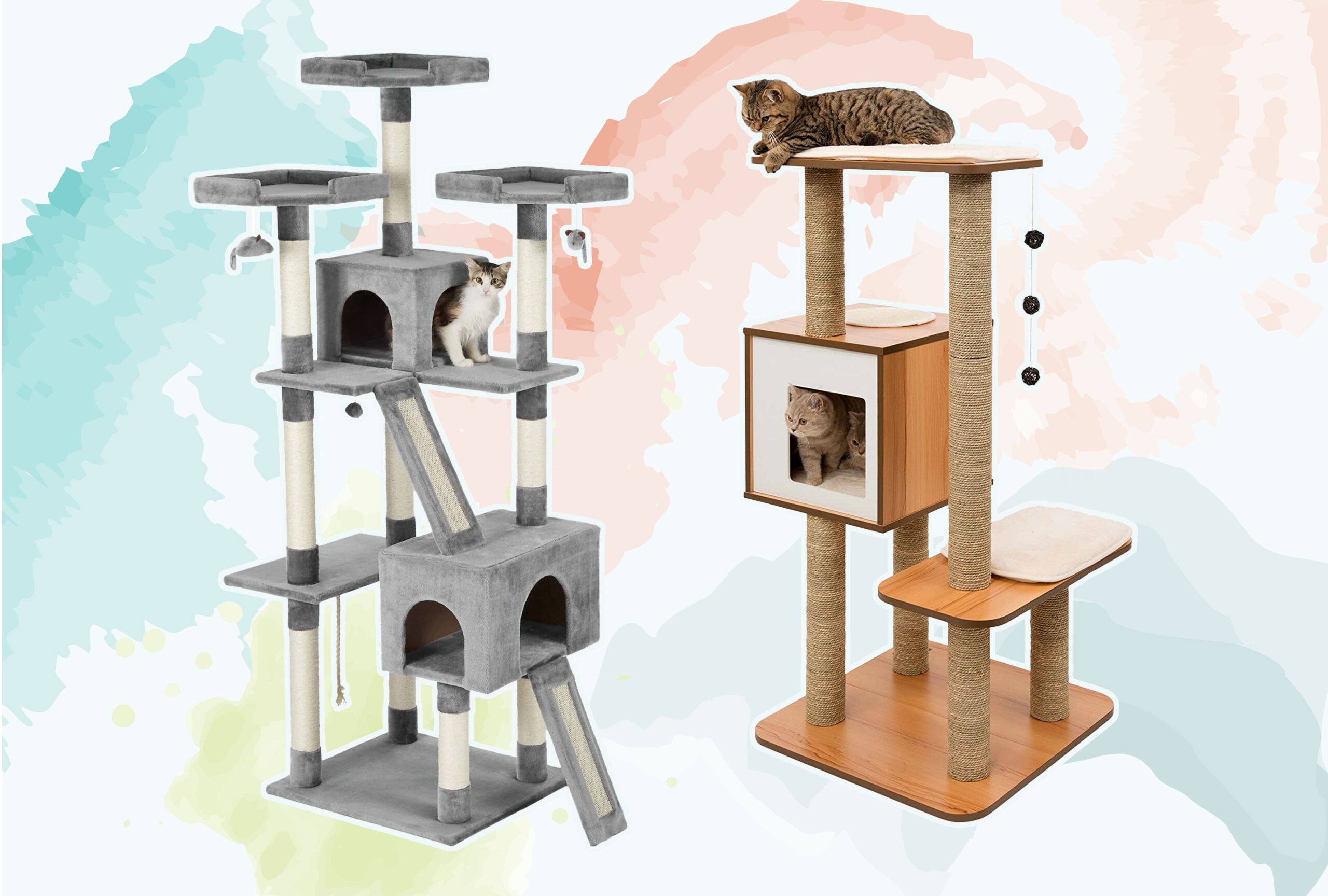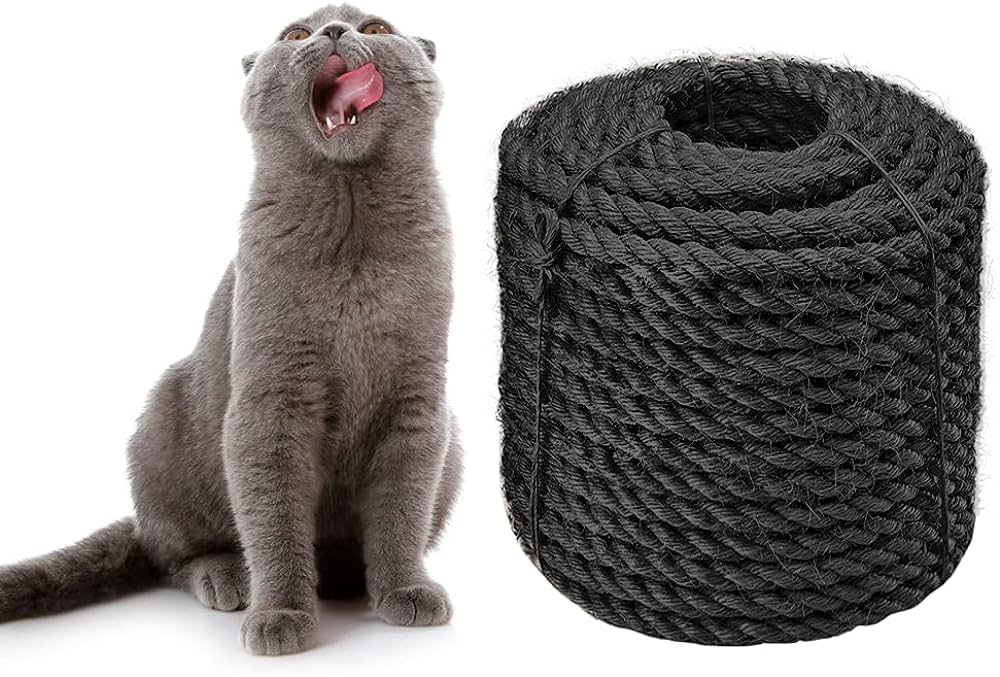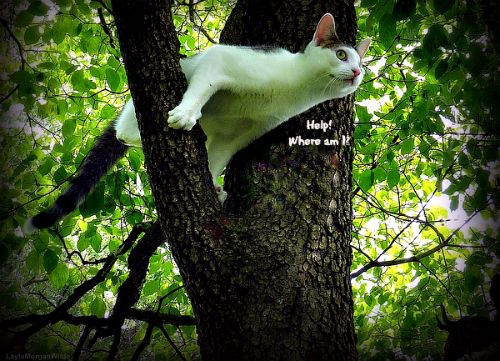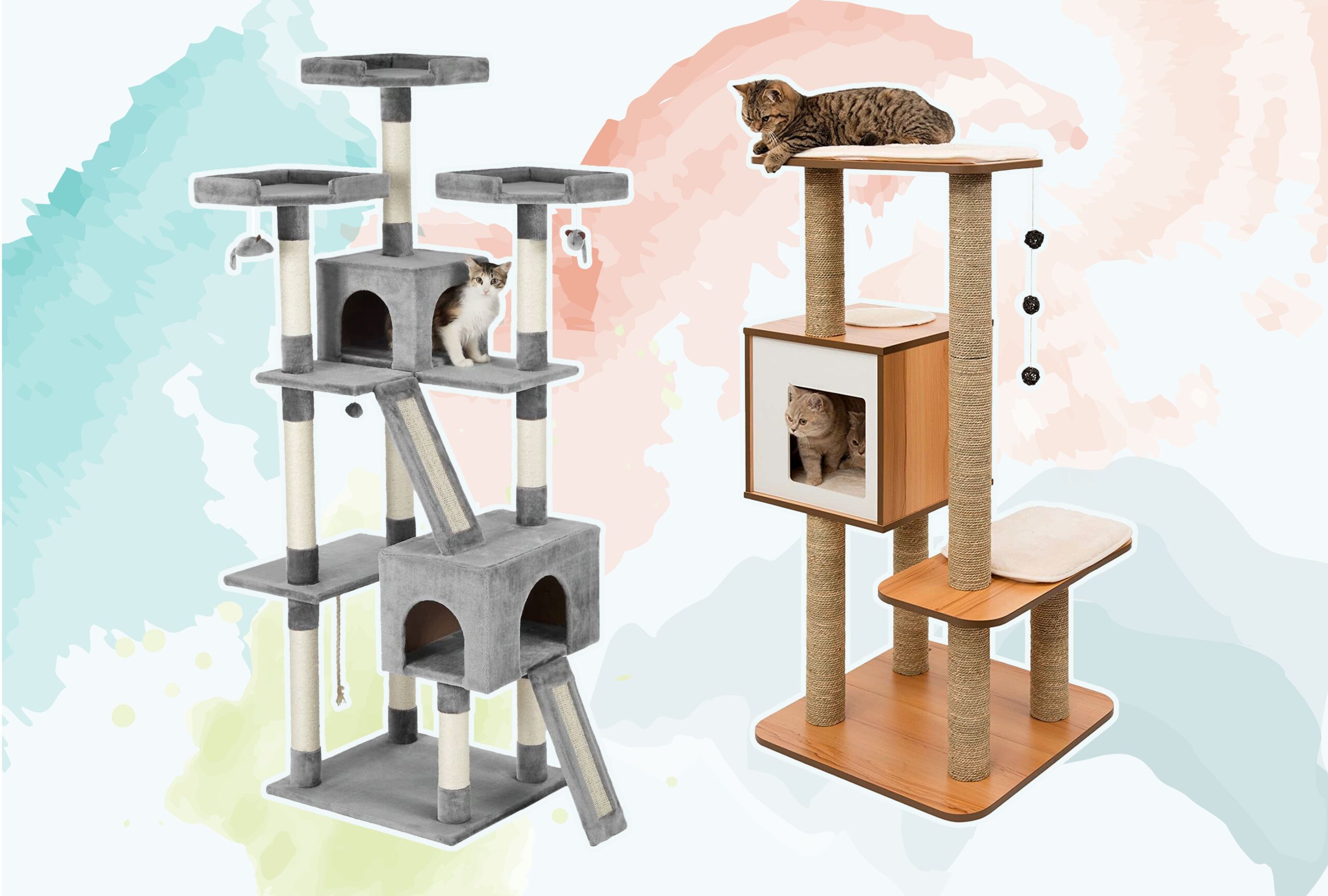Ensure stability and size align with your cat’s weight and activity level when choosing a cat tree. Look for durable materials like solid wood or thick cardboard.
Selecting the perfect cat tree can be pivotal for your feline’s physical and mental well-being. It’s crucial to find a blend of cozy perches, scratching posts, and stimulating toys to match your pet’s personality and needs. Consider the available space in your home to determine an appropriate size that won’t overwhelm your living area while still providing ample space for your cat to play and relax.
Opt for cat trees with non-toxic materials and easy-to-clean surfaces to maintain a safe and hygienic environment. Remember, a well-chosen cat tree can greatly enhance your cat’s quality of life and become their favorite spot for years to come.

Credit: www.homedepot.com
Assessing Your Cat’s Needs
When choosing a cat tree, think about what your furry friend truly needs. Cats love to climb and scratch, so your choice should cater to these instincts. It’s not just about height or price. It’s about finding a cat tree that suits your cat’s personality and your home.
Size And Activity Level Consideration
Not all cats are the same. Kittens are full of energy. Older cats prefer lounging spots. Remember this:
- Measure your space. The cat tree should fit well.
- Watch your cat. Do they climb a lot? Choose taller trees.
- Observe their sleep habits. Cats nap a lot. Pick one with comfy platforms.
Cat trees come in sizes for every cat. Big cats need sturdy bases. Small spaces need compact models.
Scratching Posts: Material & Durability
Scratching keeps cat claws healthy. Choose the right material for their claws:
| Material | Pros | Cons |
|---|---|---|
| Sisal Fabric | Durable, preferred by cats | Can fray over time |
| Sisal Rope | Long-lasting, tight weave | Less appealing to some cats |
| Carpet | Soft, familiar feeling | Wears quickly, less for scratching |
Consider durability. Will the post hold up against constant use? Cheap materials seem nice but cost more long-term when they break. Invest in quality.
Space And Placement
Choosing the right cat tree is essential for your feline friend’s happiness. Space and placement play crucial roles in this decision. A cat tree that fits perfectly in your home and stimulates your cat can be a wonderful addition. Let’s dive into how you can measure your space and select the ideal spot for your cat’s new playground.
Measuring Your Home
Before shopping, knowing the exact area where your cat tree will go is key. Use a tape measure to get the height, width, and length of the potential space. Remember to leave some clearance around the cat tree for your cat to jump in and out easily. Jot these measurements down to compare with product dimensions when you shop.
| Measurement | Detail |
|---|---|
| Height | Distance from floor to ceiling |
| Width | Space available side to side |
| Length | Space available front to back |
| Clearance | Extra space around the tree |
Ensure the cat tree size resonates with these measurements for a perfect fit.
Optimal Locations For Stimulation
Cats love to observe their surroundings. Place the tree near a window or in the living area. Here, they can watch birds or survey the room. Ensure it’s away from busy areas to prevent toppling. Keep it clear from doors and high traffic spots for safety.
- Near a window: For outdoor viewing pleasure
- Quiet corner: For a stress-free environment
- Living area: To interact with the family
Choose a location where your cat feels comfortable and engaged. A well-placed tree can become your cat’s favorite spot in the home.
Design And Material Preferences
Choosing the right cat tree for your furry friend involves design and material considerations. Cats love to climb, scratch, and lounge, so picking a tree that matches their needs is critical. It also has to look good in your home and last for years. Let’s dive into what makes each material and design choice unique.
Wood Vs. Carpet Vs. Faux Fur
Cat trees come in various materials, each with its pros and cons. Wood, carpet, and faux fur are popular choices with different textures and durability levels.
| Material | Texture | Durability |
|---|---|---|
| Wood | Natural, rough | Very high |
| Carpet | Soft, inviting | Medium |
| Faux Fur | Plush, warm | Low to medium |
Wood cat trees are sturdy and last long but can be heavy. Carpeted trees offer a familiar texture for cats to scratch. Faux fur models provide a soft space for cats to sleep.
Stability And Construction
A stable cat tree is non-negotiable. It should stand firm even when your cat leaps onto it.
- Look for a broad base to prevent tipping.
- Heavy-duty materials make for a solid structure.
- Check the construction quality through reviews or in-store
Trees with layers of solid wood tend to be more stable. Cat trees should also be easy to assemble with clear instructions.
Safety And Comfort Features
The safety and comfort of your feline friend are paramount when selecting a cat tree. Factors like sturdy construction and soft materials contribute to these aspects. Now, let’s explore the key features that guarantee your pet’s well-being and ease of use for you.
Edge And Corner Safety
Sharp edges and corners pose risks to playful cats. Look for a cat tree with:
- Rounded corners – This minimizes injury risks during frisky play.
- Soft padding – Provides a buffer against hard surfaces.
- Non-toxic materials – Ensure the cat tree is free of harmful substances.
Ease Of Cleaning And Maintenance
Your cat tree should be easy to keep clean and maintain for lasting enjoyment. Essential features include:
- Removable components – Simplify the cleaning process.
- Machine-washable fabrics – Allows for effortless laundering.
- Durable materials – Ensure long-lasting cleanliness and hygiene.
A well-maintained cat tree is a happy environment for your feline and a hassle-free accessory for you.
Price Versus Quality
Choosing the right cat tree can be tricky. Especially when balancing the price against the quality. It’s about finding that sweet spot. The one where your wallet doesn’t weep, but your kitty still leaps with joy. Let’s discover how to strike that perfect balance.
Budget-friendly Choices
Finding a cat tree that’s kind to your pocket is a major win. But what should you look for?
- Sturdy base: It must not wobble.
- Comfortable platforms: Your cat will want to lounge.
- Material: Look for durable yet affordable options.
Remember, cheaper can mean a shorter lifespan. That may lead to more purchases over time.
Long-term Investment Considerations
When you spend more, it often shows in quality. A higher-priced cat tree usually offers:
| Longevity | : High-quality materials last longer. |
| Safety features | : Better designs prevent tipping and provide refuge for cats. |
| Added extras | : Toys, scratching posts, and bedding might be included. |
View it as an investment into your cat’s comfort and your peace of mind.

Credit: www.amazon.co.jp
Additional Amenities To Consider
Cat trees are more than just towering structures. They’re complex play arenas for your feline friends. While basic models certainly serve their purpose, a few extra amenities can make a world of difference. Let’s explore some of these exciting additional amenities to consider during your purchase.
Built-in Toys And Accessories
Cats adore a good chase. A cat tree with built-in toys can provide endless entertainment. Look for features like:
- Hanging mice or feather toys
- Spring balls that bounce back when swatted
- Rope-covered poles for claw sharpening
Toys attached to the cat tree encourage physical activity and mental stimulation. These additions help keep your cat engaged and happy.
Expandability And Modularity
A modular cat tree might be the ultimate gift for your pet. Benefits include:
- Customization to match your cat’s personality
- Option to add or remove sections
- Variety of shapes and sizes
Expandable cat trees grow with your pet, ensuring they never lose interest. These dynamic structures can adapt to new play patterns and behaviors as your cat matures.
:max_bytes(150000):strip_icc()/best-cat-trees-4159408-da66af890782426fb82e6036af07b36b.jpg)
Credit: www.thesprucepets.com
Frequently Asked Questions For What To Look For When Buying A Cat Tree
What Are The Essentials Of A Cat Tree?
A good cat tree should have multiple levels, sturdy construction, and scratching surfaces. It should also include comfortable perches and possibly some toys to engage your cat. Ensure it fits your space and suits your cat’s size and age.
How To Choose The Right Size Cat Tree?
Measure your available space and consider your cat’s size. A larger cat or multiple cats need a bigger, more robust tree. Check the tree’s dimensions and weight capacity to ensure it’s a suitable match for your pets.
What Materials Are Best For Cat Trees?
Look for cat trees made from solid wood, sisal rope, and durable fabric. These materials can withstand cat scratching and climbing. Avoid flimsy plastic or materials that can easily tear, like low-quality carpeting or cardboard.
Are There Cat Trees For Large Breeds?
Yes, there are cat trees specifically designed for large breeds. These trees have wider perches, sturdier bases, and reinforced platforms. They are built to support the weight and activity level of larger cats like Maine Coons or Ragdolls.
Conclusion
Selecting the perfect cat tree requires thoughtful consideration. Balance size, material quality, and design with your cat’s personality. Remember, durability ensures longevity, while variety keeps your feline friend engaged. The right choice promotes exercise, comfort, and a designated scratching area, contributing to a happy, healthy kitty.
Trust in your research; your cat will thank you.



